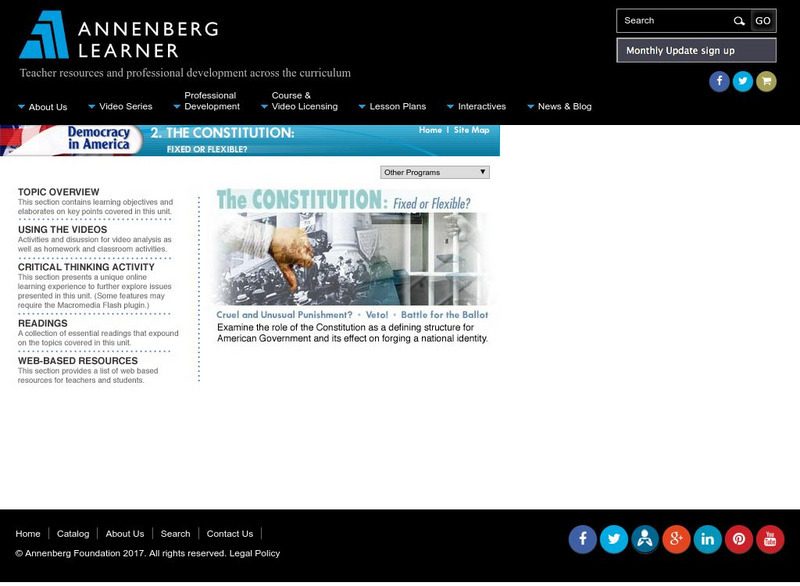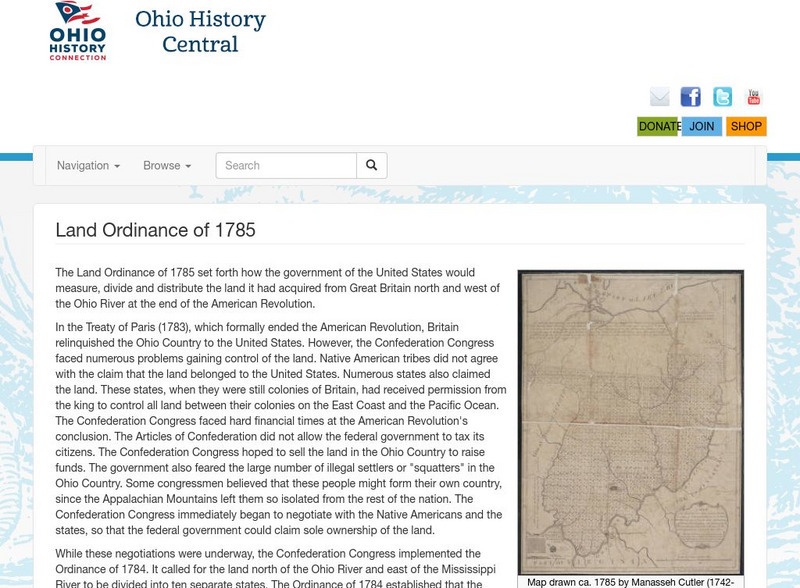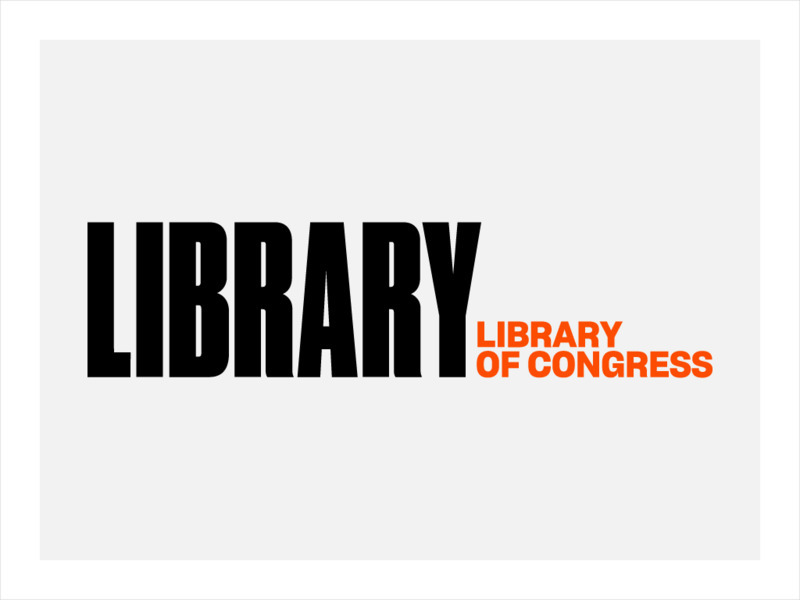iCivics
I Civics: Wanted: A Just Right Government
Look at the tensions and differences of opinion that existed among early American states and citizens. Learn about the Articles of Confederation, why the first "constitution" didn't work, and how compromise led to the Constitution.
National Humanities Center
National Humanities Center: America in Class: After Shays' Rebellion
Lesson on the aftermath of Shays' Rebellion as a reflection of the republican nature of American government and the right to vote. Includes primary resources with background information and strategies for analysis.
ClassFlow
Class Flow: A New Government
[Free Registration/Login Required] This flipchart discusses the events following the American Revolution and how the new government developed. The Articles of Confederation and their replacement by the US Constitution are explained....
PBS
Pbs Learning Media: Alexander Hamilton: Lawyer, Writer, and Founding Father
Through a short video and an analysis of two primary sources, students will examine the life of Alexander Hamilton, an important military and political leader.
The Dirksen Congressional Center
Congress for Kids: Democracy
Aimed at younger students learning about government, this section of the larger 'Congress for Kids' website focuses on Democracy. Links to related topics include democracy vs autocracy, 13 Colonies, Declaration of Independence, and...
Tom Richey
Tom richey.net: The u.s. Constitution: Framing, Principles and Ratification [Ppt]
Presents key ideas for examining how the Articles of Confederation were replaced with the Constitution and the compromises that were reached during debates.
PBS
Wnet: Thirteen: Freedom: A History of Us: Revolution: Continental Congress [Pdf]
A lesson plan from the producers of the 16-episode PBS series "Freedom: A History of US" that examines the rules by which the Continental Congress governed colonial America. Learners will identify people who held positions of leadership...
Bill of Rights Institute
Bill of Rights Institute: John Jay
John Jay epitomized the selfless leader of the American Revolution. Born to a prominent New York family, John Jay gained notoriety as a lawyer in his home state. He favored a moderate approach to Britain but joined his fellow Patriots...
Bill of Rights Institute
Bill of Rights Institute: Roger Sherman
Although not the most charismatic or eloquent Founder, Roger Sherman was highly esteemed by his contemporaries. At Sherman's death, Ezra Stiles, president of Yale College, wrote, "He was an extraordinary man-a venerable uncorrupted...
Bill of Rights Institute
Bill of Rights Institute: John Dickinson
John Dickinson was called "The Penman of the American Revolution." During the 1760s and 1770s, he authored numerous important essays in defense of American rights, including The Late Regulations Respecting the British Colonies, the...
History Teacher
Historyteacher.net: The u.s. Constitution: Quiz (1)
This 10-question multiple choice quiz is immediately scored and covers details about the Constitution and Articles of Confederation.
National Endowment for the Humanities
Neh: Edsit Ement: Background on the Patriot Attitude Toward the Monarchy
In this lesson plan, students will consider "Background on the Patriot Attitude Toward the Monarchy." The plan includes worksheets and other student materials that can be found under the resource tab.
Quia
Quia: Building of the Constitution
Quiz yourself on how well you know the events leading up to writing the United States Constitution.
A&E Television
History.com: What Did the Three Continental Congresses Do?
During the Revolutionary War, the Continental Congress became America's de facto government. Over a period of 15 years, from 1774 to 1789, the Continental Congress underwent a profound evolution. Starting out as a temporary group that...
Library of Congress
Loc: The Learning Page: Government Policy Toward Native Americans
How did the new government deal the Native Americans living in the Northwest Territory? Find out what the government did to keep the peace between the original inhabitants and the new settlers.
iCivics
I Civics: Road to the Constitution
How did we go from thirteen British colonies to the United States of America? Explore the major hardships of life under British rule, how the colonists decided to break away, and how they set a path for a new and independent government....
iCivics
I Civics: The Federalist Debate
The ratification debate between the Federalists and Anti-Federalists gives us insight into the ideas behind both sides and a better understanding of how our government developed in its early years.
Annenberg Foundation
Annenberg Learner: Democracy in America: The Constitution: Fixed or Flexible?
This unit explores the timeless qualities of The U.S. Constitution, the opportunities to amend it, and how it is a pillar of the American identity, through these activities, videos, and outside resources.
Library of Congress
Loc: The New Nation, 1783 1815
The links in the New Nation, which is provided for by the Library of Congress, will lead you to sets of selected primary sources on a variety of topics,such as the Constitution, governmental policy on Native Americans, and problems and...
Other
Calliope Film: Shays' Rebellion and the Constitution
Synopsis of the historical significance of Shays' Rebellion in 1786 and how this upheaval influenced the Continental Congress to adopt the Constitution of the United States.
Digital History
Digital History: The Tyranny of the Majority
See how the actions of state legislatures threatened the very existence of a national government during the Confederation Era.
Ohio History Central
Ohio History Central: Land Ordinance of 1785
Read how the Confederate Congress dealt with issues about claims of land by states, Native Americans, and squatters west of the Appalachian Mountains. See how the Land Ordinance of 1785 divided up the land, supported public education,...
National Endowment for the Humanities
Neh: Edsit Ement: Before and Beyond the Constitution: What Should a President Do?
In this Curriculum Unit, young scholars will consider "Before and Beyond the Constitution: What Should a President do?" in 3 Lessons. The unit also includes worksheets and other student materials that can be found under the resource tab.
Library of Congress
Loc: Today in History: April 13: Thomas Jefferson, Grand Old Flag
Multi-faceted site with hypertexted links to Jefferson's writings, summary of the events leading to the Constitution and the failure of the Articles of Confederation; included is Jefferson's original draft of the "Bill for Establishing...


















